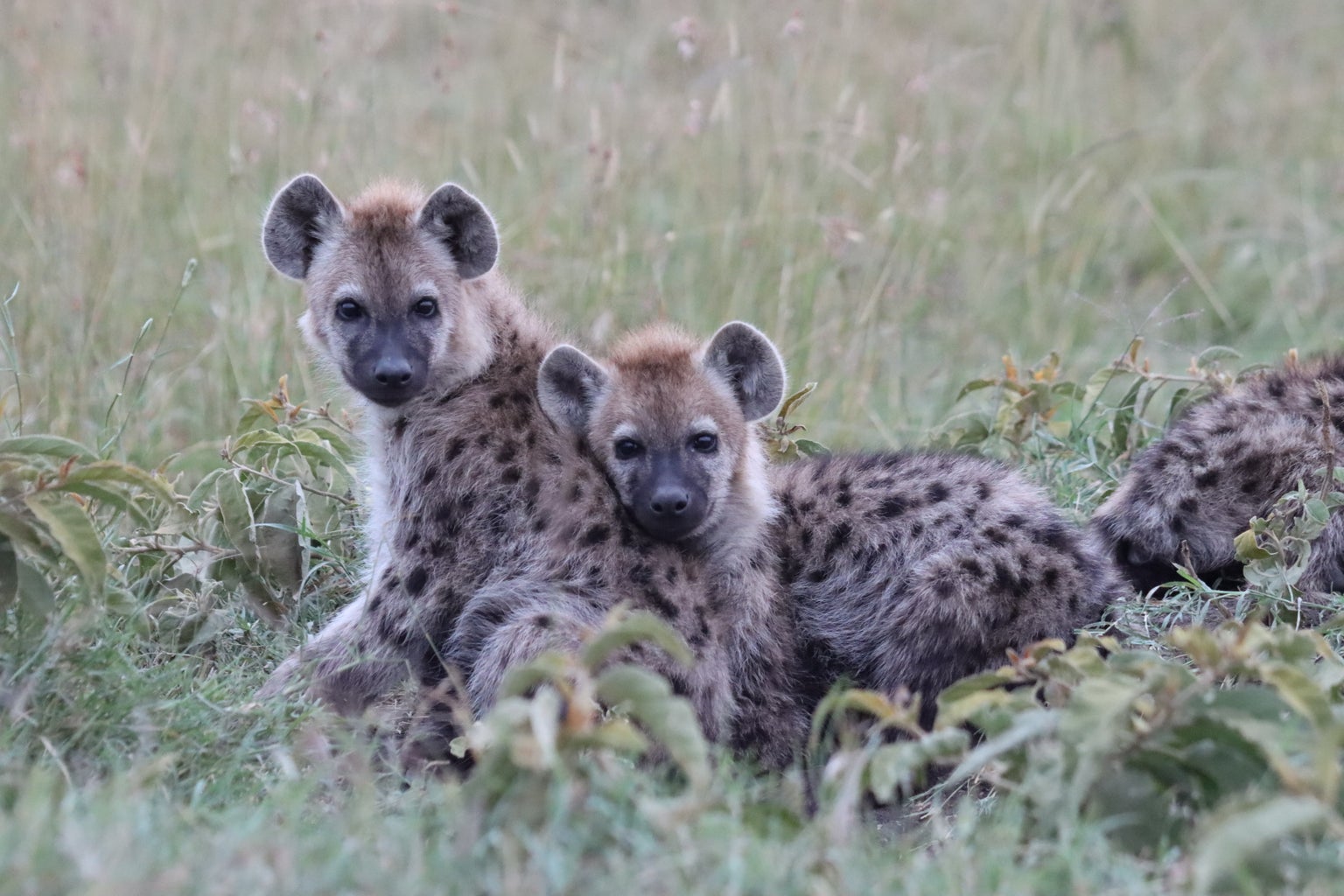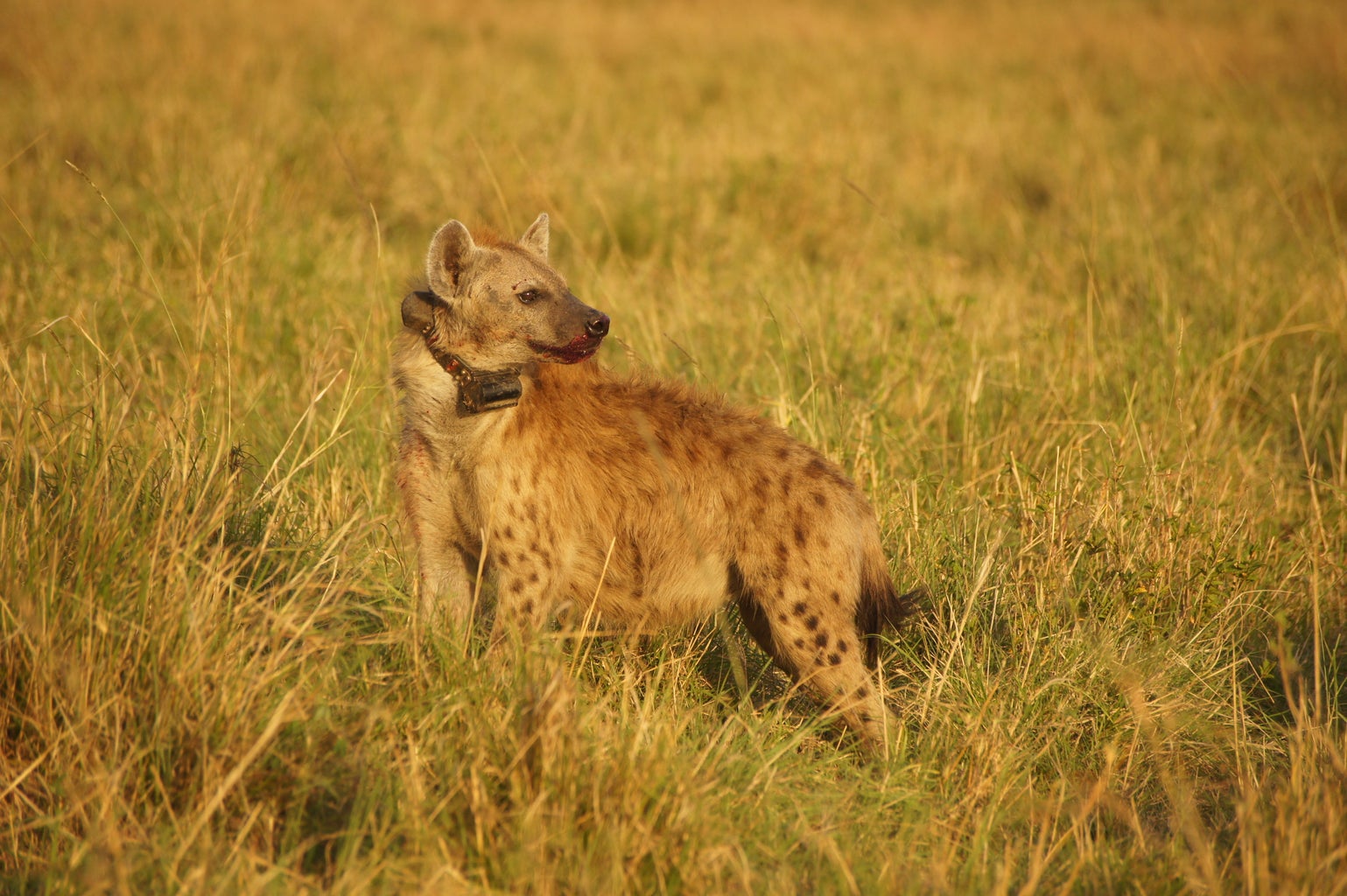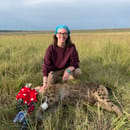Last spring, I was fortunate enough to study abroad at the Mara Hyena Project at the Maasai Mara National Reserve in Kenya through my work as a student researcher in the Holekamp Lab at Michigan State University. The Mara Hyena Project, established in the 1980s, had produced groundbreaking research on the social habits and secret lives of spotted hyenas. Although there are many discoveries yet to be made, the research so far has definitively established the spotted hyena as one of the most socially interesting animals on earth. The bad rap these animals get from pop culture media like “The Lion King” has been dispelled through studies examining the intricate relationships hyenas have with each other, their wide-ranging dietary patterns and preferences, and how they interact with other species in the savannah.
I spent my time with the Mara Hyena Project working with a graduate student at Michigan State, Jana Woerner, who taught me all the ins and outs of what it means to be a field researcher and wildlife biologist. Jana and I spent four months together in the Maasai Mara, taking data on the behavioral ecology of hyenas in a few clans on both sides of the impressive Mara River. Our days consisted of three-hour observation sessions at dawn and dusk, collecting and analyzing behavioral data as well as physical samples, updating databases, and regular daily chores. I learned so much from Jana during my time with her in Kenya, and wanted her to be able to share some of the insights she gave me, specifically on graduate school and research.
Here is what Jana had to say.
J: My name is Jana Woerner and I’m currently a third year Ph.D. student in the Holekamp Lab at Michigan State University. I graduated from Duke University in 2018 with a B.S. in Environmental Sciences and a minor in Biology. During undergrad, I studied abroad in Australia through Duke, in South Africa through the Organization for Tropical Studies, and in Vietnam, Morocco, and Bolivia through the School for International Training.
K: What are you doing now?
J: I am currently working on the data analysis for my Ph.D. at the Max Planck Institute of Animal Behavior in Konstanz, Germany. My dissertation research focuses on foraging in spotted hyenas and is part of a much bigger collaborative project spearheaded by Dr. Ari Strandburg-Peshkin. Our research group uses bio-loggers to track social groups and elucidate how communication drives coordination and decision-making in animal societies (more info here: https://www.movecall.group/what-we-do).
Earlier this year, we applied tracking collars that record GPS locations, accelerometer data, and all vocalizations to an entire social group of spotted hyenas in the Maasai Mara National Reserve, Kenya. These collars tracked the movements and calls of all hyenas around the clock for three weeks. Spotted hyenas live in a fission-fusion society with stable social groups that can contain up to 130 members and defend a common territory. However, due to high within-group competition over food, hyenas spent most of their time alone or in small subgroups. Nonetheless, hyenas sometimes must come together to defend their territory and resources against other hyena groups and lions. We want to figure out how hyenas coordinate these collective behaviors.
K: How did you get to where you are now? Why MSU?
J: My study abroad program in South Africa focused on wildlife ecology and conservation. After spending an entire semester traveling around different national parks, conducting research projects, and learning about all of the cool wildlife we saw, I knew that I wanted to become a wildlife biologist. After I graduated from Duke, I interned with the Nature Conservancy in North Carolina and looked at different ways to make solar farms more “wildlife friendly.” I also went to Brazil with Dr. Stuart Pimm and his organization Saving Nature to deploy camera traps in the Atlantic Forest.
In 2019, I joined the Mara Hyena Project as a research assistant through the NSF IRES (International Research Experiences for Students) program and the rest is history… I knew basically nothing about spotted hyenas when I first arrived but was keen to return to the African savannah after my experience in South Africa. I quickly fell in love with these often-misrepresented animals. Hyenas are highly intelligent and social animals that are incredibly adaptable to their environment. Contrary to what “The Lion King” portrays, hyenas are also skilled hunters. When Dr. Kay Holekamp suggested that I join her lab as a doctoral student in 2021, I immediately jumped on the opportunity!
K: What has been the most rewarding about your graduate experience so far?
J: I love sharing our research with others! I have been so incredibly lucky to live in the Maasai Mara National Reserve and study spotted hyenas for 2.5 years. There is nothing more special than being able to show others the beauty of the Mara and convince them that hyenas are a lot cooler than pop culture makes them out to be. It’s also just a lot of fun to see my family, friends, new coworkers, students, and other visitors meet the hyena cubs for the first time and have them admit that hyenas can be pretty cute after all.
K: What is something you wish you would have done differently in your grad school/research journey?
J: Sometimes I wish I would’ve completed a master’s degree before starting my Ph.D., so that I would already have some experience with analyzing data, writing papers, etc. Though I absolutely love working with the hyenas, I also wish that I would’ve gotten a bit more research experience with different animals.
K: What are your next steps?
J: I will be at Max Planck until the end of March. We are currently creating the training datasets for our machine learning algorithms that will eventually help us sort through the massive amounts of data we collected with the collars. I hope to go back to Kenya this summer and will then move to East Lansing for my final years of graduate school.
K: What is your biggest piece of advice for someone who is considering pursuing a graduate education/career in research?
J: Don’t give up! The wildlife field is super competitive and it can be a little disheartening to receive rejection after rejection, but the right opportunity will come along.
Jana has such a wealth of experience, and I am so glad to be able to share some of her insights and advice here. I hope you found it as inspiring as I did!
Along with being a student, researcher, and incredible friend, Jana is also a remarkable photographer. Check out some of her favorite snapshots from her time in Kenya below!






